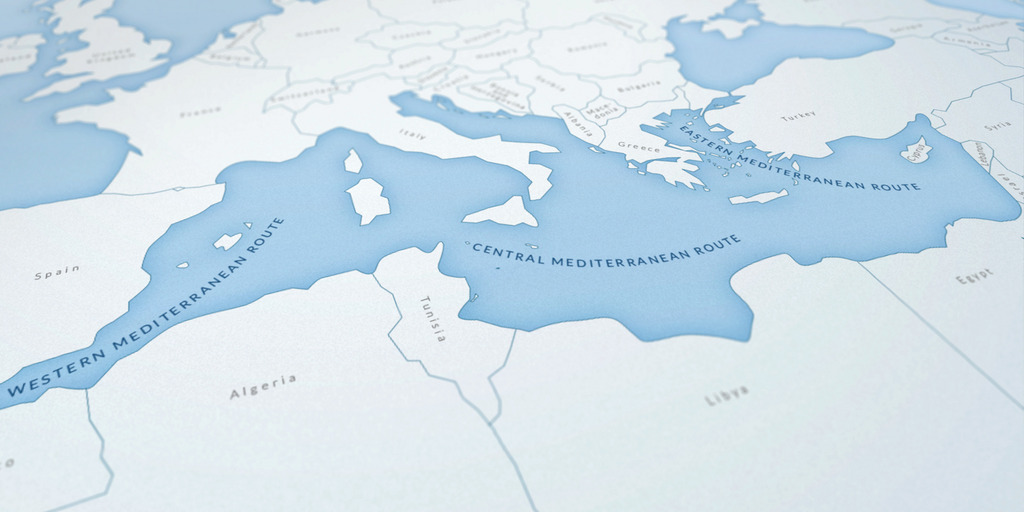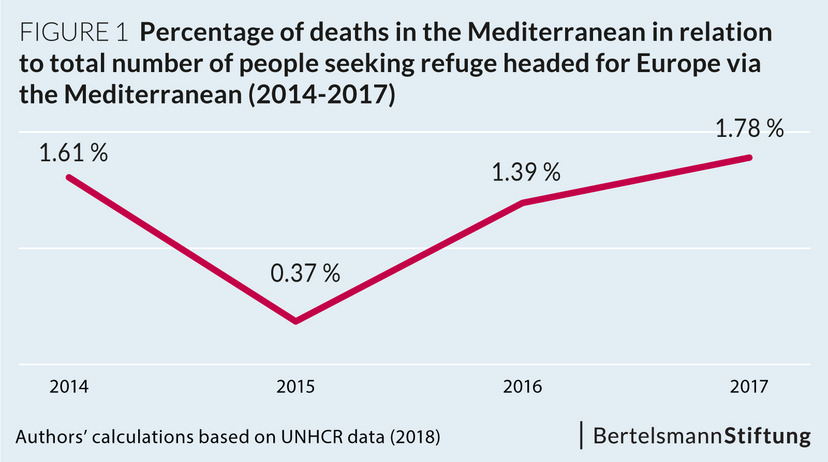
Werkzwei Detmold
Death in the Mediterranean - Are Asylum Centers Outside of Europe the Way Forward?
Over the past years, thousands have died crossing the Mediterranean to seek asylum in Europe. Neither increased border security measures nor actions against smugglers have prevented that seeking refuge in Europe has become increasingly dangerous. Proposals involving the establishment of asylum centers outside the territory of the European Union intend to stop asylum seekers from crossing the Mediterranean. However, these ideas are not expedient. Instead, there is a need for practical and sustainable solutions.
At first glance, the situation appears to have improved. The number of people crossing the Mediterranean to seek refuge in Europe has decreased. According to UNHCR, 172,301 people fled across the Mediterranean in 2017, nearly half the number recorded in 2016 (UNHCR 2018a). The number of deaths fell from 5,096 in 2016 to 3,139 in 2017. Nonetheless, crossing the Mediterranean has become increasingly dangerous over the past years. According to UNHCR data (ibid.), in 2015, 0.37 percent of all asylum seekers who tried to reach Europe via the Mediterranean died at sea. This fatality rate significantly increased to 1.39 percent in 2016 and 1.78 percent in 2017. According to UNHCR figures for the first months of 2018 (last updated 21 May), the fatality rate has further increased to 2.27 percent. It should be noted, however, that crossing the Mediterranean during the winter months has also been particularly dangerous in previous years.
In other words, in 2015, four out of every 1,000 people who attempted to cross the Mediterranean died on the way. In 2017, this number increased to 18 people. For the first five months of 2018, the fatality rate increased even further – 23 out of 1,000 people died in the Mediterranean.
The increased fatality rate seems to be partly caused by the fact that when the EU-Turkey deal from March 2016 effectively cut off the Eastern Mediterranean route, asylum seekers diverted to other pathways towards Europe. In 2017, 70 percent of all asylum seekers who arrived in Europe via the Mediterranean took the much longer and thus more perilous Central Mediterranean route – particularly from Libya towards Italy (UNHCR 2018b).
In light of continued crossings via the Mediterranean and the high death toll, there has been enormous political pressure to take action and provide solutions. The Policy Brief Migration “Death in the Mediterranean. Are Asylum Centers Outside of Europe the Way Forward?” analyses the concept of extraterritorial asylum centers and outlines alternative solutions. You can find the Policy Brief here.




